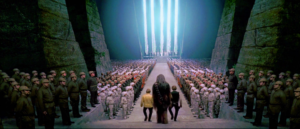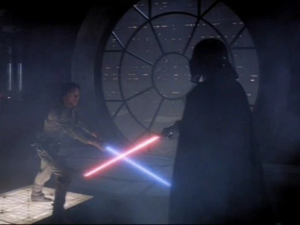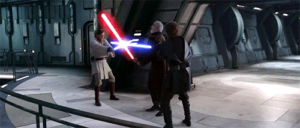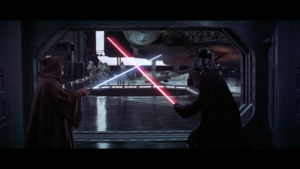This is my induction task essay where i describe how the accumulation of micro and macro elements can help to create a “Good Film”
Film’s can be deconstructed into macro and micro elements; Macro elements include genre, message and value, representation, narrative, style, authorship and theme. Micro elements include editing, cinematography, mise-en-scene and sound. In order for a film to be successful, these key elements must be well thought out.
For example with micro elements cinematography plays a large part, this includes camera angles and lighting and how scenes are captured to portray the narrative as well as possible. Additionally, sound is very important, in general it is the sound in the movie that makes it seem real, whether it is a bone breaking or a wave crashing, if the sound is believable it will be more successful; with an audience.
Not only that but editing is also an important micro element. Whether it is the combination of scenes using transitions, the colour correction of a sunset or the c.g.i, editing is very important in turning a raw, unprocessed recording into a film.
Finally mise-en-scene, mise-en-scene is the arrangement of everything in a scene. For example, the setting of a scene can tell what kind of an experience one will have in it or how it can affect someone / something. If the scene is in the desert, you will expect it to be hot etc. Another part of mise-en-scene is costume, whether or not someone fits into the scene will reveal how they impact the community and how they may feel. A fancy person in a poor town will stand out and cause a sense of discomfort. There are many other attributes and elements of mise-en-scene but in general it is the amalgamation of elements in the scene that will help convey the narrative.
Next is macro elements, there are many macro elements so i will explain them briefly.
Firstly: Genre
The genre of a film is a way of categorising the film so that it can be advertised to different audiences. Different people prefer different genres and therefore it is all personal preference.
Secondly: message and value.
Many great films are great because of the messages that are portrayed and the values the characters are seen to have. This way the audience can relate to the characters but they may also learn a thing or two from the implicit or explicit messages in the film. These messages can be used to improve the community or to convey certain ideals.
Thirdly: representation
Representation is important because they are specific decisions directors make to create a unique story and directors can choose whether to represent stereotypes normally or abnormally so that their film may differ from other films.
Additionally narrative is important
Narrative is the story or plot of a film, it can be fictional or non-fictional. Good narratives have a beginning, middle, and end and show development to create differentiation.
Conjointly, style must be acknowledged.
Style is the way the film is presented to express ideas with a different or interesting approach
Furthermore,
Authorship is an interesting macro element that helps make a film good.
Authorship is the state of writing, creating or causing. Ideally a good authorship would have a clear explanation to events in the film so that viewers may understand and yet also help the audience recognise the author by their style.
Finally: Theme
Theme in a film is all about having a basic idea that the plot and narrative runs off, different ideas can be conveyed in different genres by having separate themes. For example horror genre can have happy themes or scary themes. Themes can be more complicated than simple feelings and can relate to current world affairs. And in general are a way for producers to talk about similar ideas in an alternate way. Therefore it is also similar to style. There is no such thing as a good theme and in fact, what makes a film good is how a producer or character conjoins a theme to a plot or idea so it may be portrayed in a desired way.




 especially imperative in regards to the genre of the film being Sci-Fi and being made in the 1970s.
especially imperative in regards to the genre of the film being Sci-Fi and being made in the 1970s.